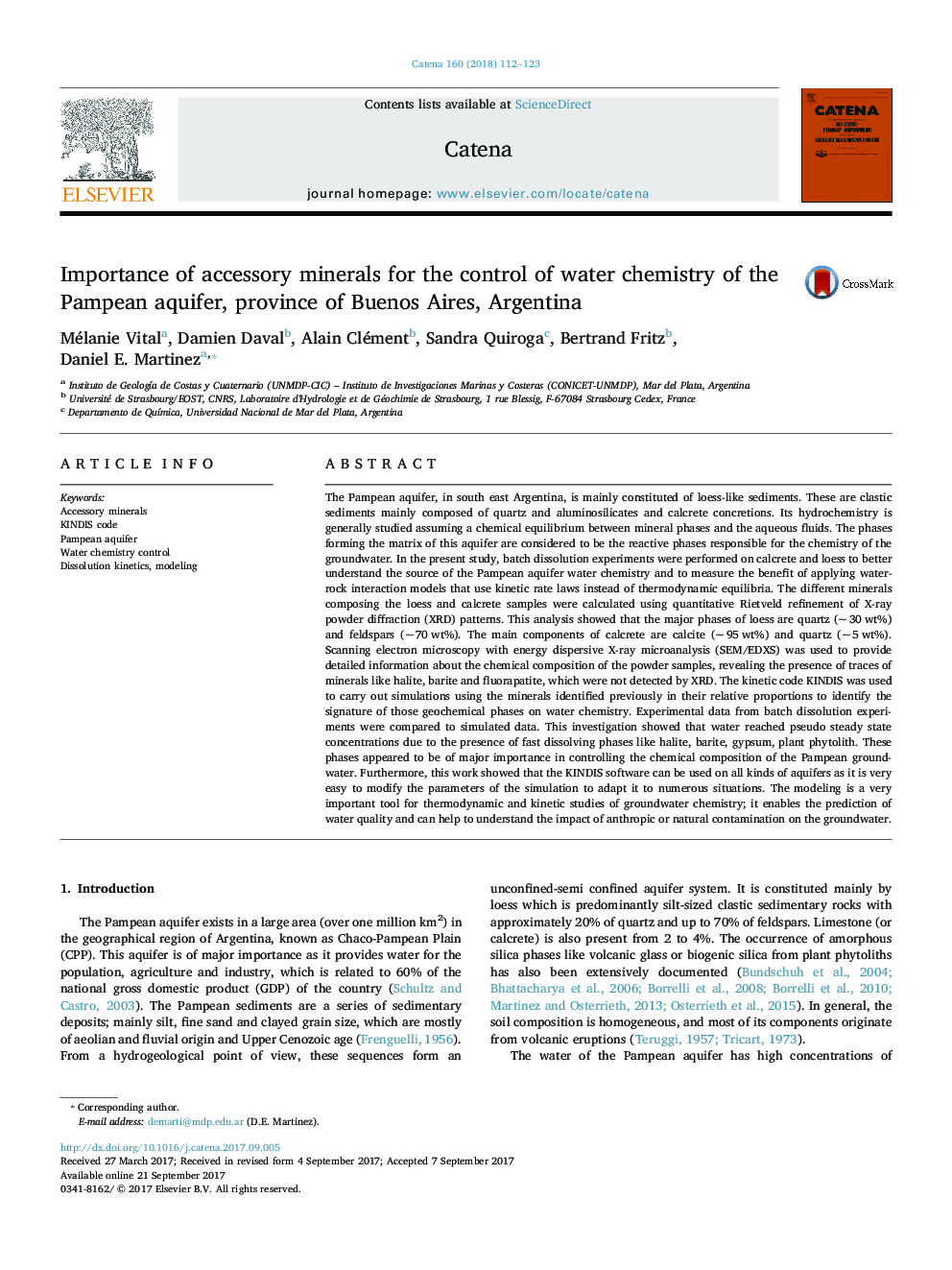| کد مقاله | کد نشریه | سال انتشار | مقاله انگلیسی | نسخه تمام متن |
|---|---|---|---|---|
| 5770032 | 1629194 | 2018 | 12 صفحه PDF | دانلود رایگان |

- Accessory minerals such as halite, barite and fluorapatite were detected.
- The dissolution of accessory minerals is determinant for groundwater composition.
- Kinetic modeling allows for identifying the minerals controlling groundwater composition.
- Groundwater composition is close to equilibrium with respect to the rock-forming minerals.
The Pampean aquifer, in south east Argentina, is mainly constituted of loess-like sediments. These are clastic sediments mainly composed of quartz and aluminosilicates and calcrete concretions. Its hydrochemistry is generally studied assuming a chemical equilibrium between mineral phases and the aqueous fluids. The phases forming the matrix of this aquifer are considered to be the reactive phases responsible for the chemistry of the groundwater. In the present study, batch dissolution experiments were performed on calcrete and loess to better understand the source of the Pampean aquifer water chemistry and to measure the benefit of applying water-rock interaction models that use kinetic rate laws instead of thermodynamic equilibria. The different minerals composing the loess and calcrete samples were calculated using quantitative Rietveld refinement of X-ray powder diffraction (XRD) patterns. This analysis showed that the major phases of loess are quartz (~Â 30Â wt%) and feldspars (~Â 70Â wt%). The main components of calcrete are calcite (~Â 95Â wt%) and quartz (~Â 5Â wt%). Scanning electron microscopy with energy dispersive X-ray microanalysis (SEM/EDXS) was used to provide detailed information about the chemical composition of the powder samples, revealing the presence of traces of minerals like halite, barite and fluorapatite, which were not detected by XRD. The kinetic code KINDIS was used to carry out simulations using the minerals identified previously in their relative proportions to identify the signature of those geochemical phases on water chemistry. Experimental data from batch dissolution experiments were compared to simulated data. This investigation showed that water reached pseudo steady state concentrations due to the presence of fast dissolving phases like halite, barite, gypsum, plant phytolith. These phases appeared to be of major importance in controlling the chemical composition of the Pampean groundwater. Furthermore, this work showed that the KINDIS software can be used on all kinds of aquifers as it is very easy to modify the parameters of the simulation to adapt it to numerous situations. The modeling is a very important tool for thermodynamic and kinetic studies of groundwater chemistry; it enables the prediction of water quality and can help to understand the impact of anthropic or natural contamination on the groundwater.
Journal: CATENA - Volume 160, January 2018, Pages 112-123